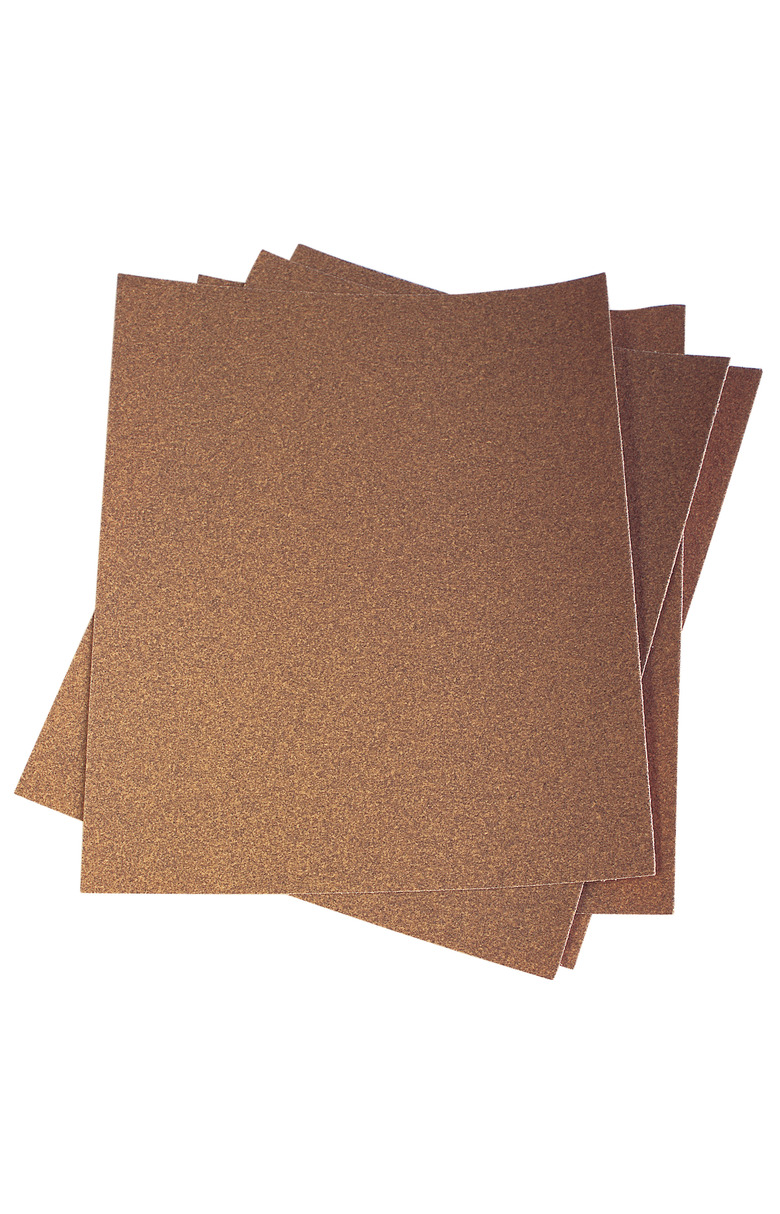What Grade Of Sandpaper For Sanding Walls?
Sanding a wall is typically not recommended because sandpaper can damage the finish or the paint, leaving behind blemishes. Sometimes, however, sanding a wall is necessary, such as when you've made a repair or the wall is being prepared for painting. In these cases, knowing which grade of sandpaper to choose for the job can make all the difference in the quality of your results.
Grades Defined
Grades Defined
The abrasive particles of sandpaper are referred to as its grit or grain, with the number of abrasive particles per inch determining the sandpaper's roughness, from coarse to fine. Coarse sandpaper has low numbers, between 40 and 60, while fine sandpaper has higher numbers, from 150 and up. The grit you choose depends on the task at hand. Coarser grits, for example, are best for heavier jobs such as stripping and sanding; finer grits are intended for finishing work.
Sanding Repairs in Plaster and Drywall
Sanding Repairs in Plaster and Drywall
Any defects — cracks, gouges or nail holes — that occur in a wall of plaster or drywall can easily be repaired by filling the blemishes with spackling or putty. Wait for the spackling or putty to dry according to the manufacturer's instructions, then sand with a medium 120-grit sandpaper. Touch up the area with a coat of paint, blending it carefully to minimize evidence of the repair.
Sanding Plaster and Drywall to Paint
Sanding Plaster and Drywall to Paint
Even minor damage and slight imperfections can show through a fresh coat of paint if they're not first attended to and sanded. Check the plaster or drywall for surface flaws. Should you spot any problems, such as small cracks or nail holes, fill them with putty or spackling. Use a paint scraper to remove the excess before it dries, then allow the filler to dry. Sand it smooth with 120-grit sandpaper.
Sanding Wood to Repaint
Sanding Wood to Repaint
The baseboard is a wooden board or molding that covers the edge of a wall adjacent to the floor or carpet. Over time, shoes, vacuum cleaners and chair legs can scuff baseboards, necessitating a new coat of paint. Before repainting, lightly roughen the surface with a medium-grade sandpaper, such as a 120-grit. If the baseboards are not painted and will only be re-stained, sand them twice: first with a 120-grit, then with a 180-grit. Sanding with progressively finer paper will soften any remaining scratch marks left by the heavier sandpaper that may show through the stain. These same procedures can also be applied to wainscoting, crown molding and other wooden parts of the wall.
Sanding Oil Paint for Latex
Sanding Oil Paint for Latex
If you plan to use latex paint over oil paint, it will be necessary to improve adhesion by applying a coat of conversion primer before applying the coat of latex. While this is generally the preferred method of preparation, some choose to skip this step and simply roughen the surface of the oil paint with fine-grade sandpaper. This will allow the new paint to adhere to the old paint and prevent the new paint from peeling. Use a 220-grit sandpaper for this project.
Considerations
Considerations
Protect yourself by using a particle mask during sanding. You can prevent dust from spreading to other parts of the house by closing off vents in the rooms where you're sanding and sealing the doorways with plastic.
Note that paints made prior to 1978 may contain lead. Sanding these paints can create very serious health risks. If you're not sure what year the paint was applied to your walls, have it tested for lead.
